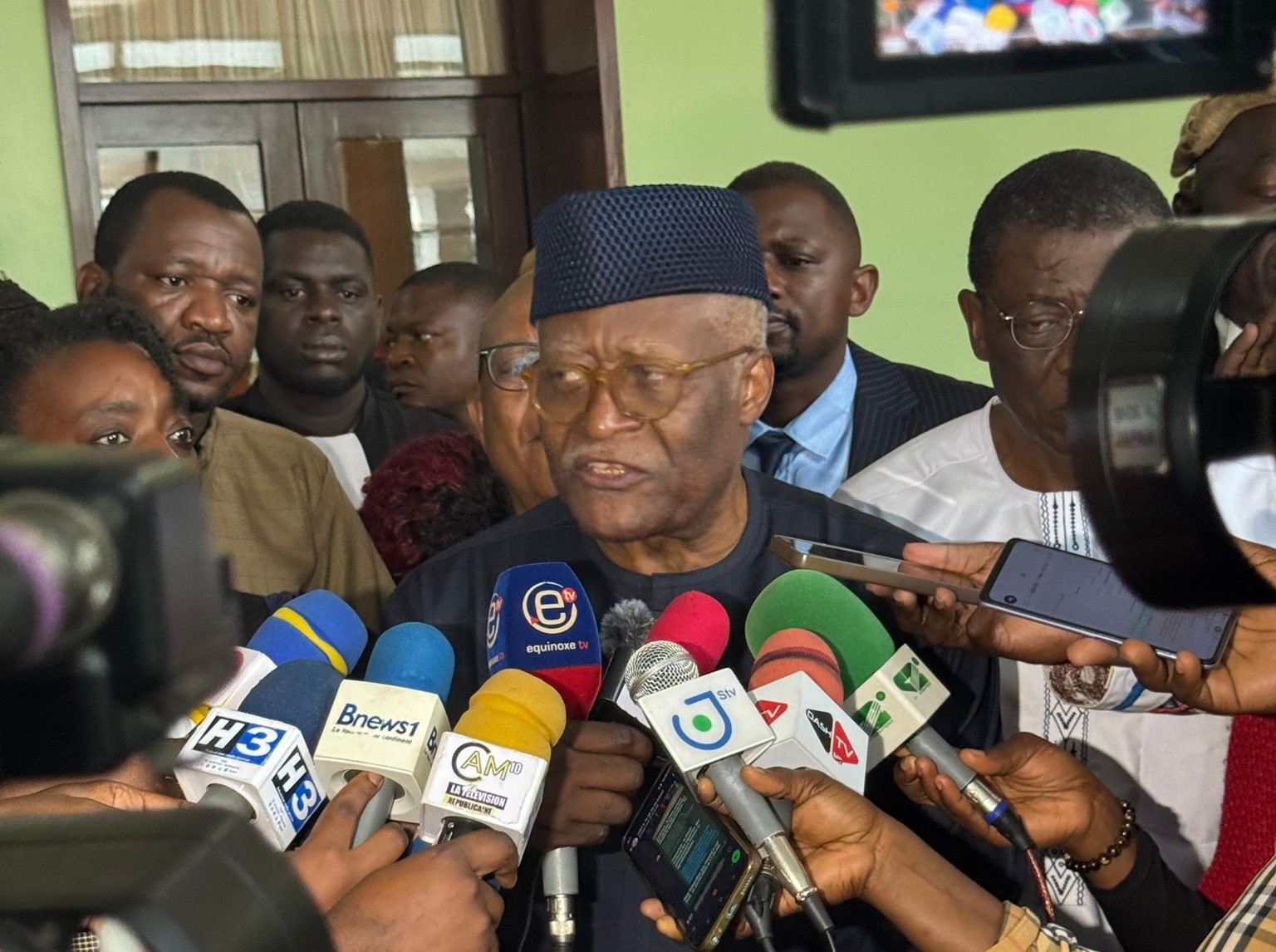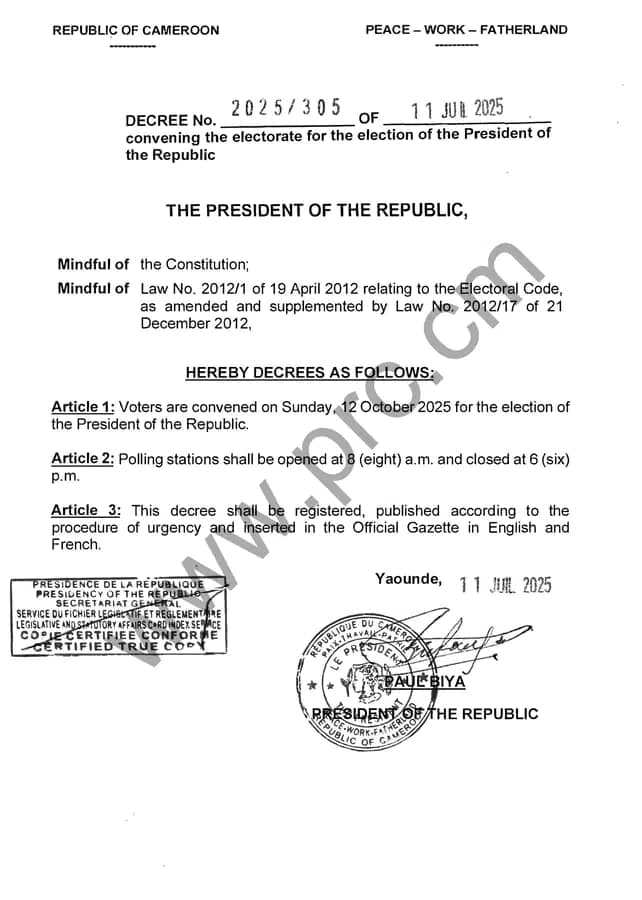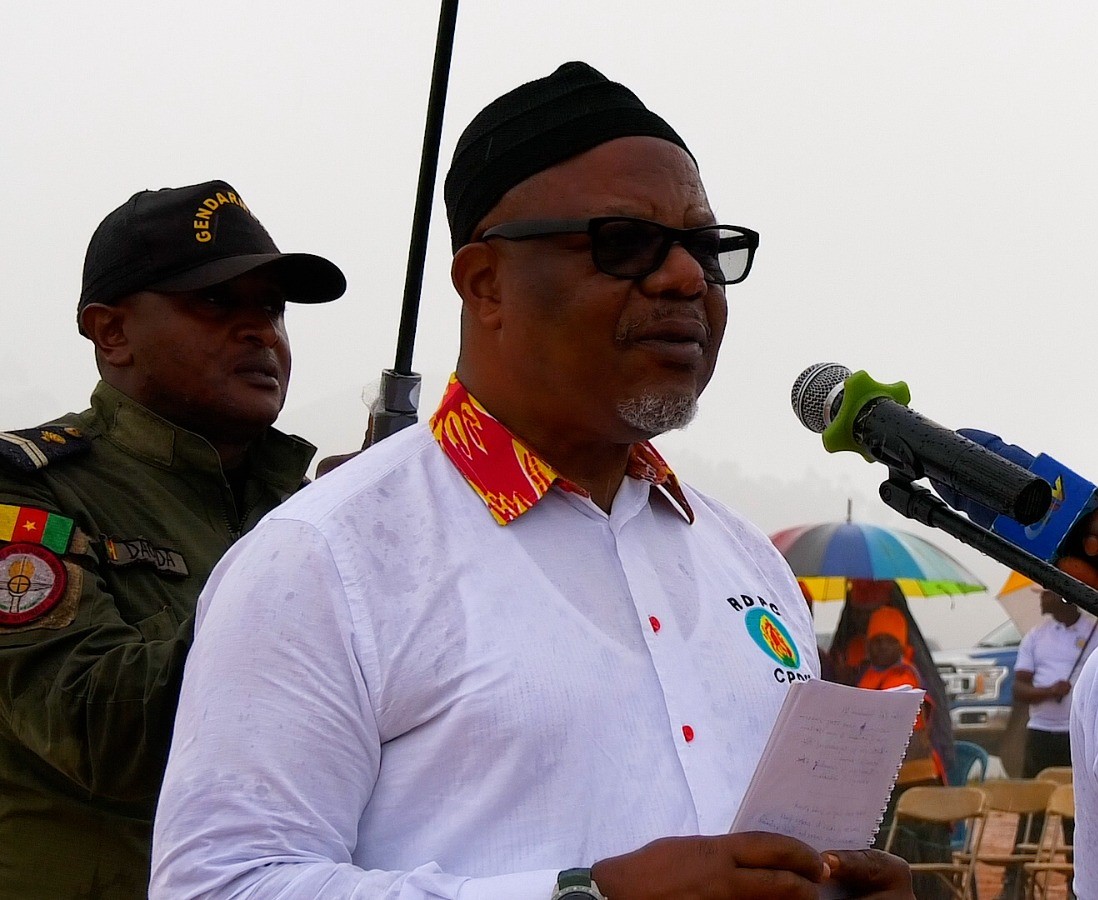By Etienne Mainimo Mengnjo
The independent body charged with organizing elections in Cameroon, ELECAM, have made public a shortlist of 13 candidates cleared to contest in the nation’s upcoming presidential election, slated for Oct. 12.
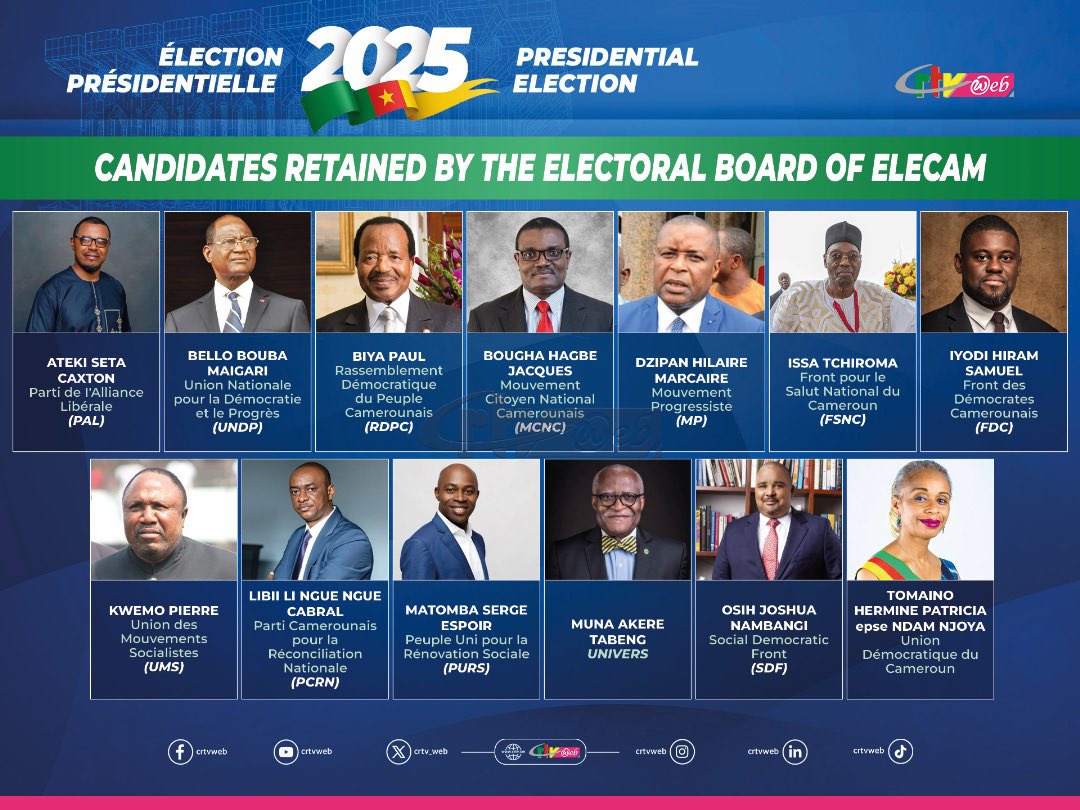
The publication was made public on Saturday July 26. Enow Abrams Egbe, chairperson of ELECAM’s Electoral Board, unveiled the much-anticipated list in Yaounde, flanked by his fellow board members and an array of high-ranking state officials. The public disclosure marked a crucial step in the country’s democratic process.
From an initial pool of 83 hopefuls who submitted their applications, the final 13 are notably led by incumbent, President Paul Biya, 92, representing the ruling Cameroon People’s Democratic Movement (CPDM) party. Biya, a towering figure in Cameroonian politics, seeks to extend his decades-long tenure.
Among the contenders who successfully navigated the rigorous vetting process are Joshua Osih, the standard-bearer for the Social Democratic Front (SDF); Akere Muna, a prominent legal mind of the UNIVERS party; Bello Bouba Maigari, representing the National Union for Democracy and Progress (UNDP); Tomaino Ndam Njoya of the Democratic Union of Cameroon (UDC); Cabral Libii, a youthful presence from the Cameroon Party for National Reconciliation (PCRN); and Issa Tchiroma Bakary of the National Front for the Salvation of Cameroon (FNSC).
The list is completed by Serge Matomba of the United Party for Renovation of Cameroon (PURS); Pierre Kwemo of the Union of Movements for Socialism (UMS); Ateki Zeta Caxton of the Popular Action for Liberty (PAL); Iodi Hiram Samuel of the Front for Democratic Change (FDC); Bougha Hagbe Jean of the Movement for the New Cameroonian Conscience (MCNC); and Zipang Hilaire of the MP party.
Noticeably absent from the approved list is Prof. Maurice Kamto of the MANIDEM party. He is widely recognized who, running under the Cameroon Renaissance Movement (CRM) banner, emerged as the main challenger and runner-up in the 2018 presidential election.
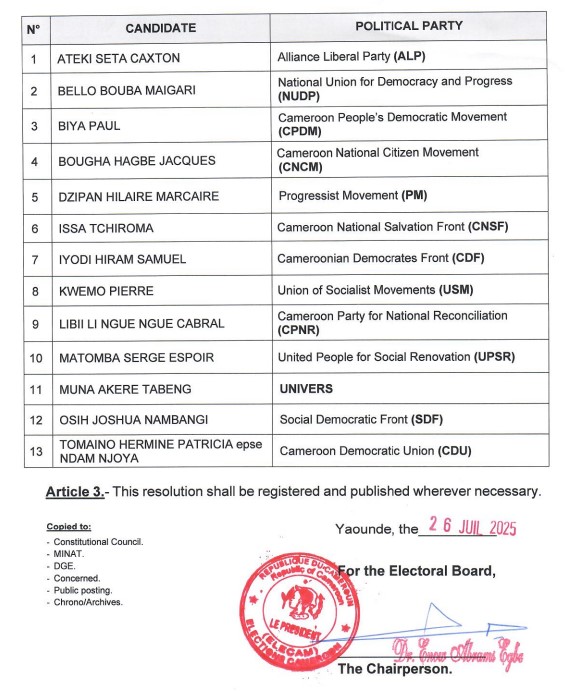
His exclusion is likely to ignite fervent debate and considerable disappointment among his numerous supporters, who had eagerly awaited his inclusion. However, candidates whose applications were rejected will now have a final opportunity to appeal their cases before the Constitutional Council.
ELECAM’s data sheds light on the geographical distribution of candidacies, with 56 submissions originating from the central region, followed by 10 from the Littoral Region. The Adamaoua Region accounted for five applications, while the West and South Regions each contributed three. The East Region saw two submissions, with the remaining regions each submitting one.
In terms of demographics, 56 candidates received endorsements from political parties, while 27 opted to run as independent candidates. A significant majority, 76, were male, with seven female candidates putting their names forward. Forty-seven aspirants were below the age of 51, indicating a mix of generational representation, while 36 were above 51.
Comparing with the previous election cycle, the 2025 race has drawn a notably higher number of aspiring presidents. In 2018, only 28 individuals initially filed applications, culminating in a field of nine candidates who competed in the election held on Oct. 7 of that year. At that time, 22 candidates were party-backed, and six ran independently.
